Causes of the Record-Breaking Pacific Northwest Heatwave, Late June 2021
Abstract
:1. Introduction
2. Meteorology of the Event
3. Discussion and Conclusions
Funding
Data Availability Statement
Acknowledgments
Conflicts of Interest
References
- Fischer, E.M.; Sippel, S.; Knutti, R. Increasing probability of record-shattering climate extremes. Nat. Clim. Chang. 2021, 11, 689–695. [Google Scholar] [CrossRef]
- Walsh, J.E.; Ballinger, T.; Euskirchen, E.S.; Hanna, E.; Mård, J.; Overland, J.E.; Tangen, H.; Vihma, T. Extreme weather and climate events in northern areas: A review. Earth-Sci. Rev. 2020, 209, 103324. [Google Scholar] [CrossRef]
- Latif, M.; Barnett, T. Causes of decadal climate variability over the North Pacific and North America. Science 1994, 266, 634–637. [Google Scholar] [CrossRef] [PubMed] [Green Version]
- Trenberth, K.; Hurrel, J. Decadal atmosphere–ocean variations in the Pacific. Clim. Dyn. 1994, 9, 303–319. [Google Scholar] [CrossRef]
- Holton, J.R. An Introduction to Dynamic Meteorology; Academic Press: Waltham, MA, USA, 1979. [Google Scholar]
- Kay, J.; King, M. Radical Uncertainty; Norton and Company: New York, NY, USA, 2020. [Google Scholar]
- Cohen, J.; Zhang, X.; Francis, J.; Jung, T.; Kwok, R.; Overland, J.; Ballinger, T.J.; Bhatt, U.S.; Chen, H.W.; Coumou, D.; et al. Divergent consensuses on Arctic amplification influence on midlatitude severe winter weather. Nat. Clim. Chang. 2020, 10, 20–29. [Google Scholar] [CrossRef]
- Barnes, E.A.; Screen, J.A. The impact of Arctic warming on the midlatitude jet-stream: Can it? Has it? Will it? Wiley Interdiscip. Rev. Clim. Chang. 2015, 6, 277–286. [Google Scholar] [CrossRef] [Green Version]
- Woollings, T.; Barnes, E.; Hoskins, B.; Kwon, Y.-O.; Lee, R.; Li, C.; Madonna, E.; McGraw, M.; Parker, T.; Rodrigues, R.; et al. Daily to Decadal Modulation of Jet Variability. J. Clim. 2018, 31, 1297–1314. [Google Scholar] [CrossRef]
- Overland, J.E.; Wang, M. The 2020 Siberian heat wave. Int. J. Clim. 2021, 41, E2341–E2346. [Google Scholar] [CrossRef]
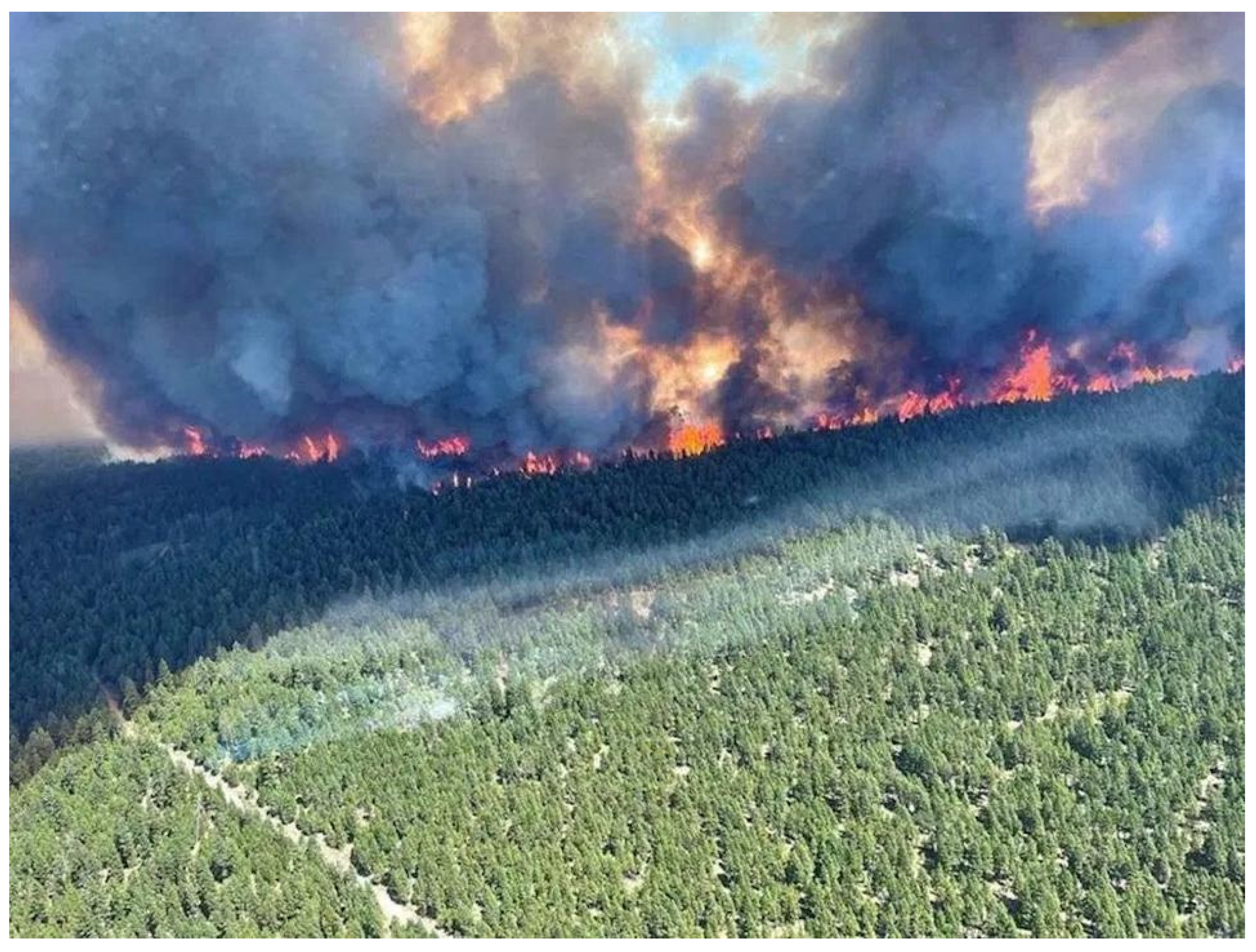
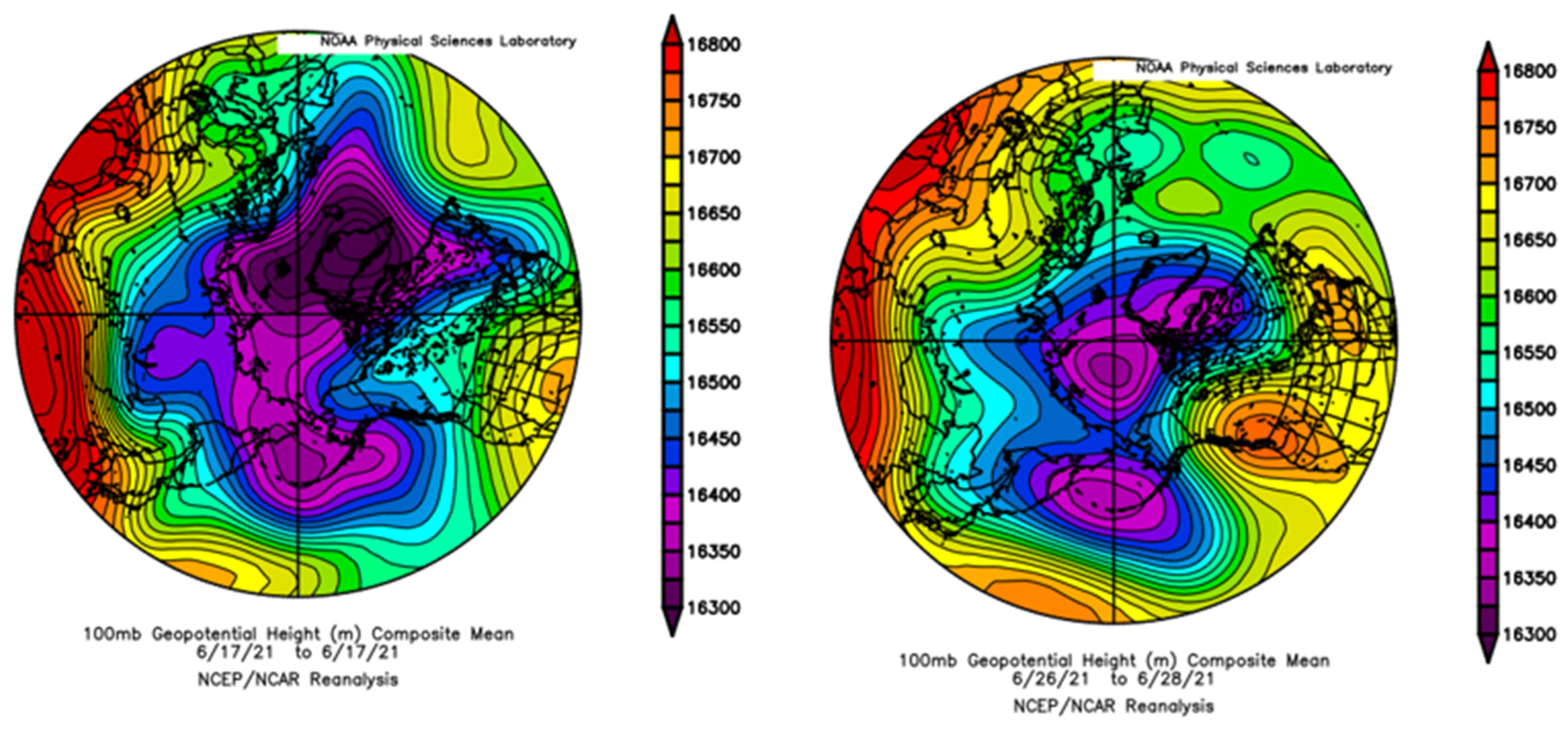
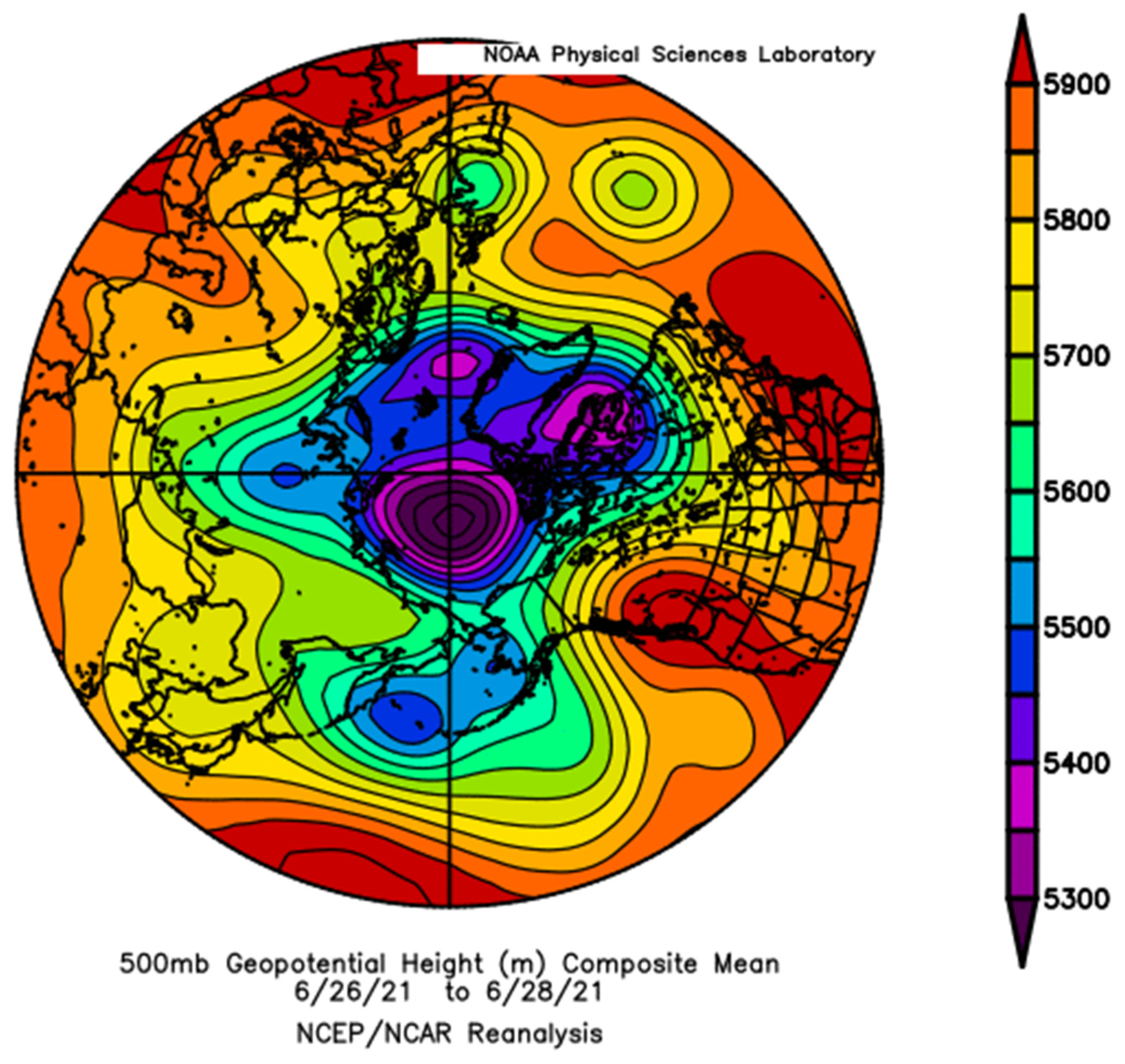
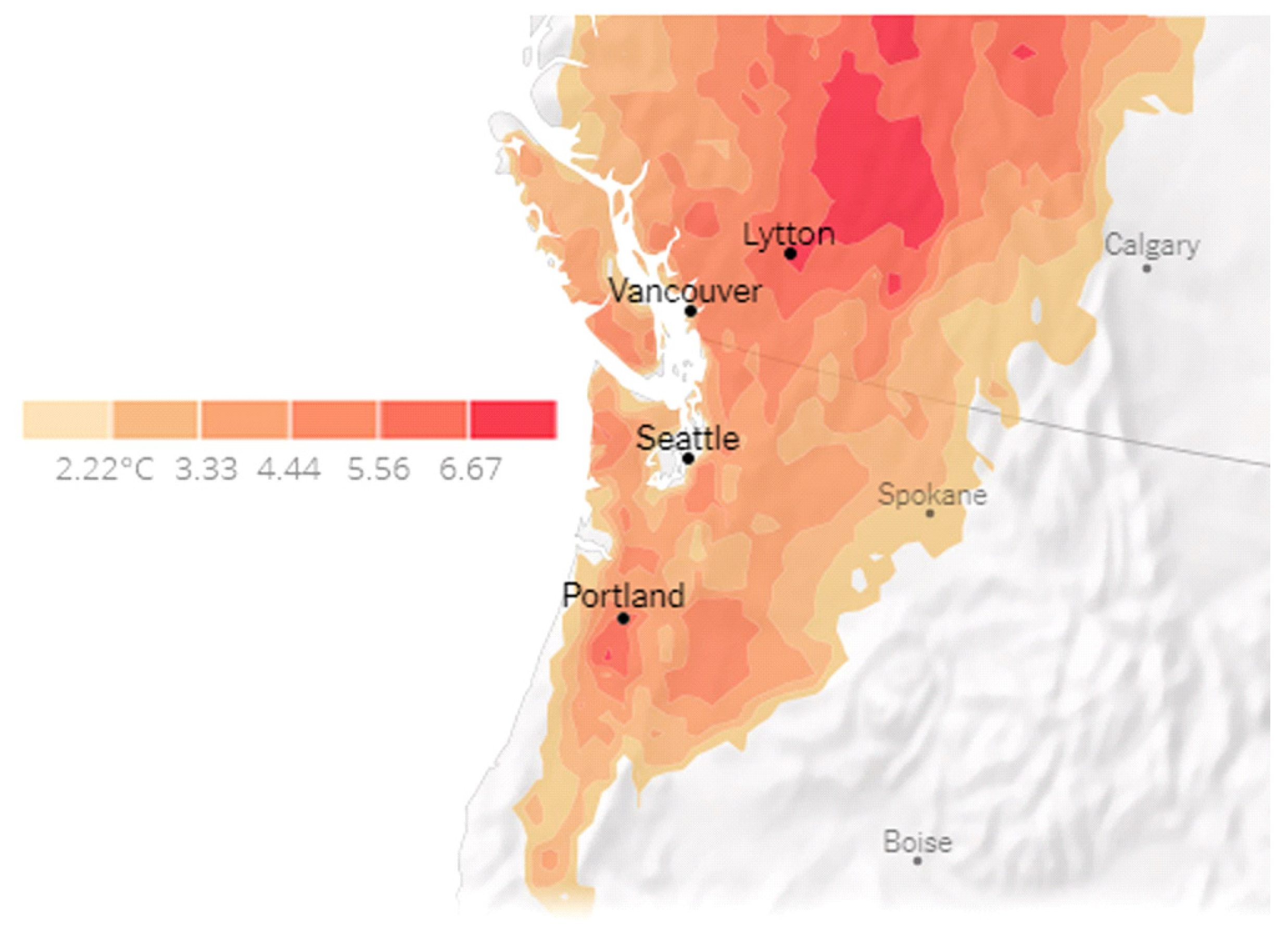
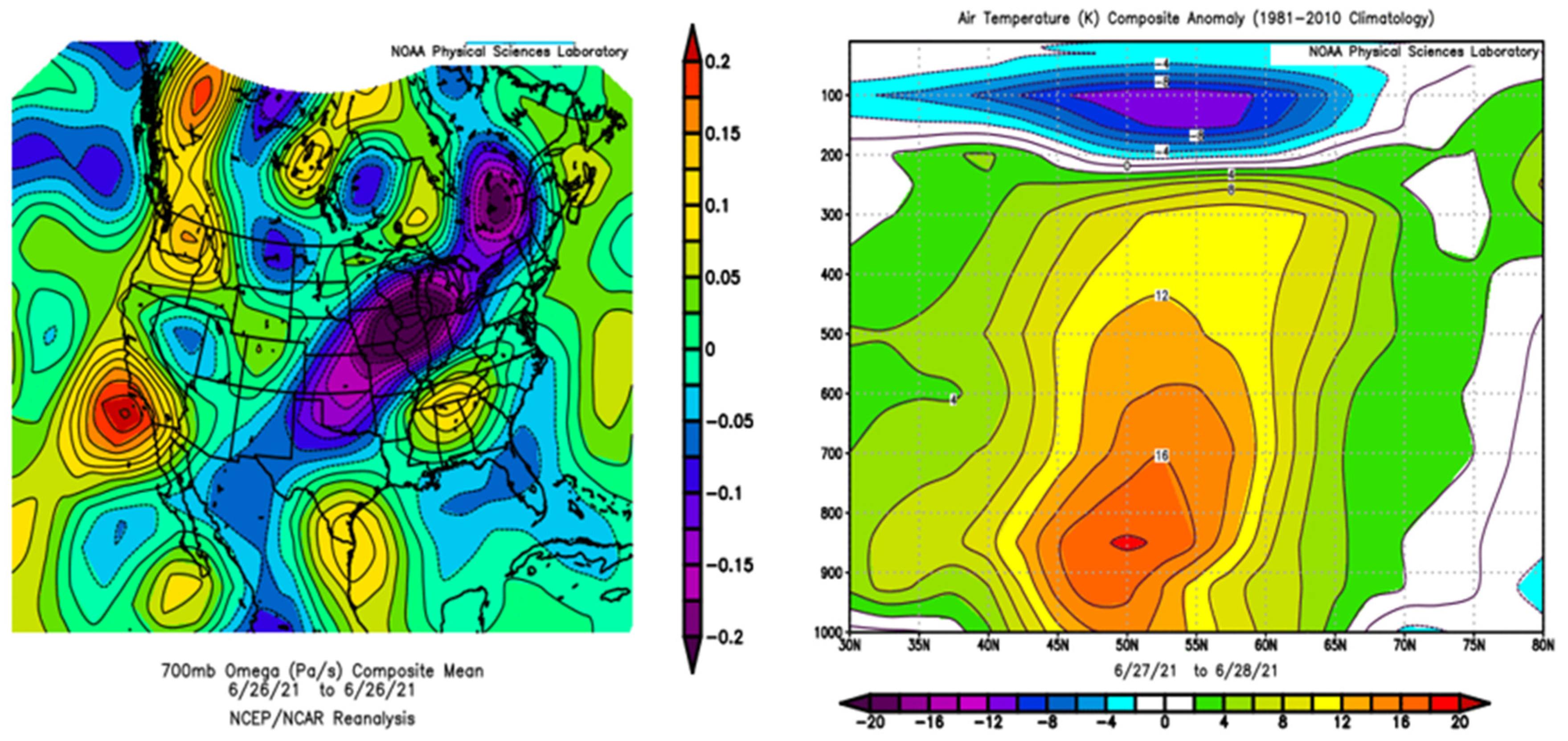
Publisher’s Note: MDPI stays neutral with regard to jurisdictional claims in published maps and institutional affiliations. |
© 2021 by the author. Licensee MDPI, Basel, Switzerland. This article is an open access article distributed under the terms and conditions of the Creative Commons Attribution (CC BY) license (https://creativecommons.org/licenses/by/4.0/).
Share and Cite
Overland, J.E. Causes of the Record-Breaking Pacific Northwest Heatwave, Late June 2021. Atmosphere 2021, 12, 1434. https://doi.org/10.3390/atmos12111434
Overland JE. Causes of the Record-Breaking Pacific Northwest Heatwave, Late June 2021. Atmosphere. 2021; 12(11):1434. https://doi.org/10.3390/atmos12111434
Chicago/Turabian StyleOverland, James E. 2021. "Causes of the Record-Breaking Pacific Northwest Heatwave, Late June 2021" Atmosphere 12, no. 11: 1434. https://doi.org/10.3390/atmos12111434




